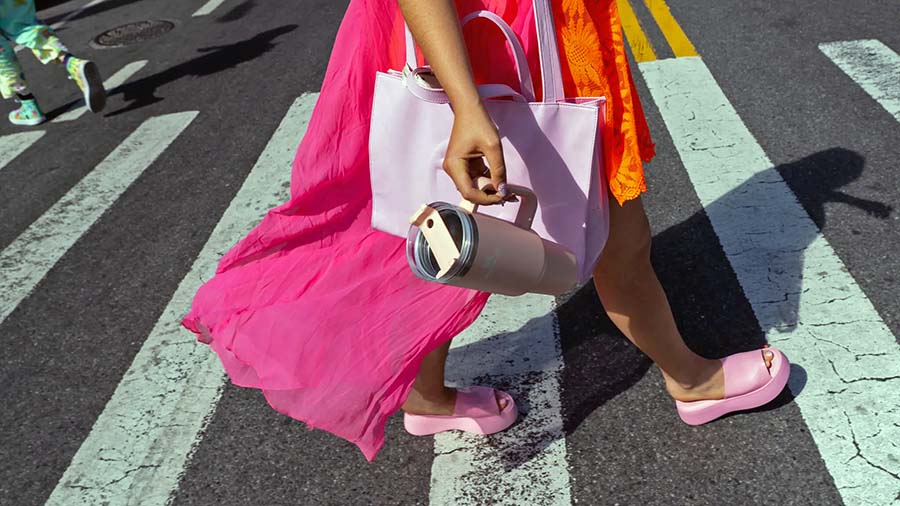Adobe released its online shopping data for the first four months of 2024, showing sales rose 7.0 percent year-over-year to $331.6 billion. The company’s research found that consumers have traded down to less expensive goods across major e-commerce categories, including personal care, electronics, apparel, furniture, and groceries.
Adobe’s Analytics platform reportedly analyzes over one trillion visits to U.S. retail sites, 100 million SKUs and 18 product categories. It covers over 85 percent of the Top 100 internet retailers in the U.S.
E-commerce Growth Remains Resilient
Adobe reported that the seven percent gain between January 1 to April 30, 2024, was supported by stable spending in discretionary categories, including electronics and apparel, along with a continued surge in online grocery shopping.
Adobe expects the first half of 2024 to drive over $500 billion in online spending, representing 6.8 percent YoY growth.
In the first four months of 2024, consumers spent $61.8 billion online for electronics (up 3.1 percent YoY) and $52.5 billion for apparel (up 2.6 percent YoY). Despite the modest YoY uptick, both categories account for 34.5 percent of the overall e-commerce spend and helped maintain topline growth. Groceries further bolstered the data, which drove $38.8 billion online and rose significantly at 15.7 percent YoY growth.
Another rising category Adobe reported for online was cosmetics, which it profiled for the first time. The category drove $35 billion in online spend in 2023, with YoY growth at 15.6 percent. The upward trend has continued, with consumers spending $13.2 billion online for cosmetics in 2024 so far, up 8 percent YoY.
“In an unpredictable economic environment, the latest data from Adobe Analytics shows continued resilience in the digital economy, as consumers embrace new categories online,” said Vivek Pandya, lead analyst, Adobe Digital Insights. “Groceries is a standout, and Adobe expects that in the next three years, the category will be a dominant force in e-commerce that is on par with electronics and apparel in revenue share.”
Consumers Trade Down To Cheaper Goods Online
Adobe reported that the months of persistent inflation have led consumers to buy less expensive merchandise across major e-commerce categories.
For each category Adobe tracks, it grouped prices into four quartiles from the highest to lowest. Shares of units sold in the most expensive and least expensive were then tracked from January 2019 to April 2024.
Adobe found the share of the cheapest goods increased significantly across categories, including personal care (up 96 percent), electronics (up 64 percent), apparel (up 47 percent), home/garden (up 42 percent), furniture/bedding (up 42 percent), and grocery (up 33 percent). On the other hand, the share of cheapest goods increased less dramatically in sporting goods (up 28 percent), appliances (up 26 percent), tools/home improvement (up 26 percent) and toys (up 25 percent)—categories bolstered by brand loyalty or a stronger desire for consumers to invest in products of the highest quality.
Adobe also made a finer point about revenue impact: Within a category like groceries, the data showed that goods with low inflation saw revenue grow by 13.4 percent, while products with high inflation saw revenue drop by 15.6 percent. The effect was less pronounced in a category such as cosmetics (revenue up 3.06 percent for low-inflation goods, down only 0.34 percent for high-inflation goods), as consumers exhibit stronger loyalty for their favorite brands.
Buy Now/Pay Later Growth Continues
Reportedly, Consumers continue to embrace Buy Now/Pay Later (BNPL) for greater flexibility in managing their budgets. From January to April 2024, $25.9 billion of e-commerce spend was driven by BNPL, up 11.8 percent from the same period last year. Adobe expects strong growth through the remainder of year, with BNPL set to drive between $81 billion and $84.8 billion in 2024, putting YoY growth between 8 percent and 13 percent.
Additional Adobe Analytics Insights
- Online shopping is becoming mobile-first. In the 2023 holiday shopping season, revenue share from mobile spending surpassed desktop for the first time at 51 percent (peaking on Christmas Day at 61 percent). The trend is expected to continue in 2024. In the first four months of 2024, mobile spending drove $156.9 billion in online spending, up 9.8 percent YoY. In the next holiday season (November/December 2024), Adobe expects mobile to overtake desktop again at 52.5 percent share of revenue online.
- Retailers’ marketing investments. Across major marketing channels, paid search remains the largest sales driver for retailers to date (28.2 percent of online sales attributable to the channel). Direct web visits (19.6 percent), akiliates/partners (17.1 percent), organic search (15.9 percent), and email (15.4 percent) were also big contributors. Revenue directly attributable to social media remained at less than 5 percent of total sales, but the share grew at 5.2 percent YoY. On the other hand, organic searches declined by 5.6 percent YoY, driving 15.9 percent of total sales.
Impact Of Inflation
Strong consumer spending this year has been driven by net new demand, as opposed to higher prices. The Adobe Digital Price Index, which tracks online prices across 18 product categories (complements the Bureau of Labor Statistics’ Consumer Price Index, which also includes prices for online-only products and services, including gas and rent), shows that e-commerce prices fell for over a year (down 5.6 percent YoY in April 2024). Adobe does not adjust numbers for inflation, but if the company factored in online inflation, there would be a higher growth in topline consumer spend.
Image courtesy NYT
















